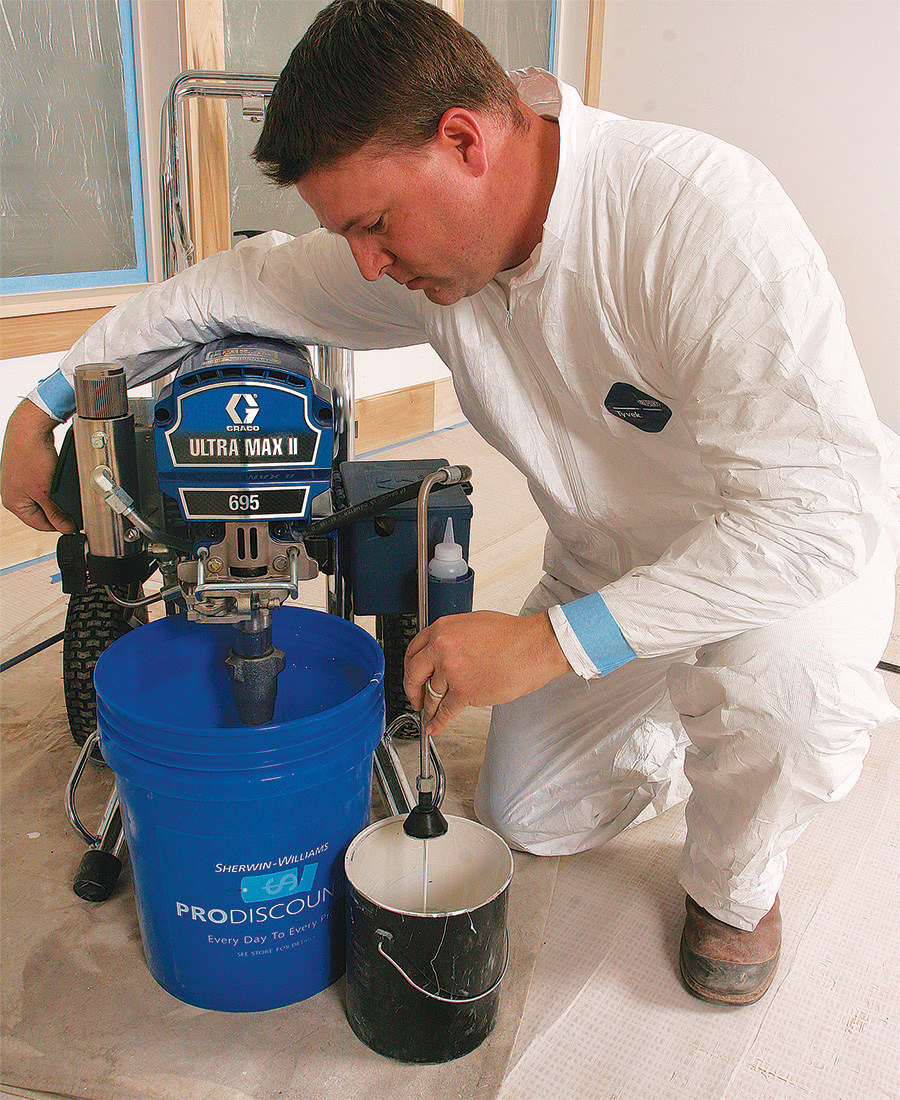Don’t Be Afraid to Spray
The basic setup, operation, and maintenance of this versatile, labor-saving tool is a lot easier than you think.

Synopsis: In this article, professional painter Philip Hansell of Hansell Painting in Durham, N.C., walks readers through the steps of using an airless sprayer. He discusses how to choose the right sprayer model and to maintain it so that it lasts a long time. A sidebar on airless sprayer tips discusses how to choose the right tip and how to know when it’s time to replace one. A second sidebar discusses the pros and cons of the consumer-grade airless sprayers that are available through online retailers and at home centers. Photos illustrate the processes of using the sprayer and cleaning it after you’re done.
During the more than 20 years I’ve been a painter, I’ve used an airless sprayer to apply thousands of gallons of paints and coatings of all types. Compared to brushing and rolling, spraying saves time on both interior and exterior projects, lays down a perfect coat of paint, and has helped my company build a reputation for high-quality work.
For a novice, using an airless sprayer conjures thoughts of a huge mess, unreasonably long cleanup, and a poor finish, but using a sprayer efficiently and with minimal mess is not that hard. It just takes somebody more experienced to walk you through the process of how to set up, operate, and maintain an airless sprayer to produce a smooth finish. With these lessons in mind, there is no reason to keep from spraying on your next painting project.
Picking the right type
Although my crew and I also have HVLP (high-volume, low-pressure) and air-assisted sprayers, we mostly use airless sprayers because of their speed, the wide range of coatings they can apply, and their reliability. Airless sprayers pressurize the paint with a pump that forces it through the hose until it’s atomized by the spray tip as it exits the gun. Although I’ve tried all the pro-quality airless spray rigs, I’ve had the best luck with Graco sprayers. They’re widely available in my area, too, so it’s easy to get tips and repair parts.
For a professional painter like me, spending several hundred to several thousand dollars on a sprayer is an easy business decision, but for GCs, remodelers, and DIYers, spending that much money on a tool for occasional use might not make sense. But you can rent sprayers such as the Graco 695 for about $100 per day at home centers, paint stores, and rental yards. A sprayer like that can spray almost any residential coating short of foundation tar, high-build drywall primers, and concrete-block fillers.
Whether buying or renting, you need to match the sprayer to the coating you’ll be applying. Smaller sprayers don’t have enough power to spray through the largest tips. Heavy exterior latex, which requires a 0.019 tip, and high-build primers (0.027 tip) pose the greatest difficulty. These paints have a high percentage of solids, which makes them more viscous and more difficult to spray than oil paints and varnishes. Most residential water-based paints require at least 2000 psi and a 0.019 or smaller tip. To know the exact tip size and spraying pressure for a specific product, go to the paint manufacturer’s website and look for the product data sheet. There you’ll find the recommended tip size and spraying pressure, as well as special handling or safety precautions. If you’re renting a sprayer, it probably makes sense to buy your own tip, because you can’t tell the condition of a tip just by looking at it. There’s more than one style of tip and tip guard, so be sure everything fits the gun that comes with the sprayer before leaving the store.
For more on how to choose the right model of sprayer, click the View PDF button below.







View Comments
I am successfully spraying latex paint with a Fuji Mini-Mite 3 stage HVLP fitted with a bottom cup and 1.0 nozzle. The paint is thinned 25% with distilled water (to avoid spotting from mineral deposits) and Floetral. I use a gravity feed cup when I have to spray at odd angles. As you have reported there are less expensive compressor driven spray options (e.g., Graco) but I find the Fuji allows me to spray all manner of materials with. I purchased the Fuji after reading the FWW review of sprayers.